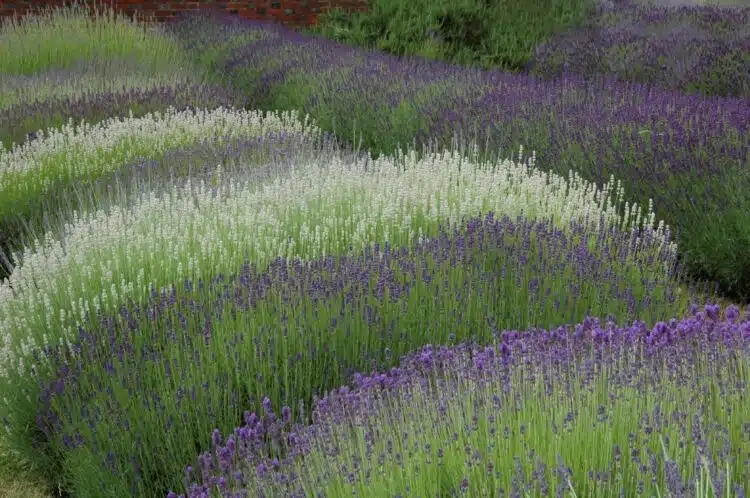HALF PRICE SALE ENDS AT MIDNIGHT ON FRIDAY – ORDER NOW!
***TODAY ONLY – GET AN EXTRA 10% OFF SALE PRICES WITH CODE FLASH10***
Menu
HALF PRICE SALE ENDS AT MIDNIGHT ON FRIDAY – ORDER NOW!
***TODAY ONLY – GET AN EXTRA 10% OFF SALE PRICES WITH CODE FLASH10***
 https://www.hopesgrovenurseries.co.uk/wp-content/uploads/2024/02/english-lavenders-750x498.jpg
LAVANDULA 'MUNSTEAD'
https://www.hopesgrovenurseries.co.uk/wp-content/uploads/2024/02/english-lavenders-750x498.jpg
LAVANDULA 'MUNSTEAD'
Bees of all kinds provide an invaluable service by pollinating plants around us, but unfortunately, bee numbers have dropped significantly in recent years, with a third of all bee populations in the UK currently in decline
Bees pollinate flowers and crops, being the largest pollinators in the world of food crops. They are the most important pollinators of the world, contributing to complex ecosystems that allow thousands of different species to coexist.
However, whether you have a garden big or small, there’s plenty you can do to help bees thrive. And it seems people are looking to do just that – what with a huge spike in Google searches for ‘bee friendly plants’ this Summer (June 2021) compared to five years years ago (669% rise), according to Google Trends.
Meanwhile, people are also taking to Instagram to upload their best bee friendly plants too, so we did a little research to find out what the most bee friendly plants are, according to Instagram!

Roses come in at number one of the most instagrammed bee friendly flowers, with a staggering 28.5 million posts. Roses are not only romantic to humans but bees also love them, their vibrant colour attracts bees for their pollen and nectar. Species Roses – Rosa canina, R. pimpinellifolia, R. rubiginosa, R. rugosa. Species roses are great for
bringing wildlife into your plot, their nectar and pollen rich flowers are far better for pollinating insects than more modern double flowered varieties and the hips will be popular with birds.
In second place is lavender, lavender is a big favourite of bees because their favourite colour is purple. Purple is bees’ favourite colour because they tend to have more nectar than other coloured flowers. Purple flowers also tend to give off more ultraviolet (UV) light than other flowers, UV light is invisible to the human eye, but the UV light on flowers helps guide insects to them, like landing strips, so that their pollen can be redistributed so that more flowers grow.
Ivy is the unsung hero of bee populations, research by the University of Sussex has demonstrated that ivy is highly beneficial for bee populations, providing high quality nectar that is 49% sugar.
Another plant with a purple flower like lavender are bluebells, meaning they are one of the bees’ favourites. Having these flowers in your garden will help boost your bee population as they will love the vibrant colours and plentiful nectar.
In fifth place come snowdrops, snowdrops provide bees with a fresh supply of pollen and nectar to get them through the winter, due to them flowering at a time where other flowers do not.
Perennials are purple so attract lots of bees, they have high quantities of both pollen and nectar too, helping provide bees with the supplies they need to create their honey and boost the bee population.
In seventh comes echinaceas, these plants are extremely useful to bees during the summer months due to their long blooming period, becoming a staple source of nectar for bees for many months.
Primroses act as an early food source for bees, helping queens establish their colonies. Bees have a symbiotic relationship with flowers, where both parties benefit; the bees consume pollen which is a vital part of their diet, and the flowers benefit from the bees feeding off of them as the bees transfer their pollen to other flowers allowing them to reproduce.
Honeysuckle’s sweet smell is known to attract bees and this plant comes in at number nine of the top ten most instagrammed bee friendly plants list. Honeysuckle is a great addition to any bee friendly garden.
Finally, in number 10 we have Geraniums, these plants provide long-lasting, purple flowers from June to August and are known for attracting a variety of species of bee.
Having a wide variety of bee friendly flowers and trees is the perfect way to create your bee haven.
If you don’t have a garden you can still help the planet become more bee friendly, add plants to your balcony or windowsill!
Using an extensive list of pollinating bee friendly plants we searched the hashtags for each one on Instagram to give us our ranking.
But what are the best bee friendly garden plants?
Well our experts here at Hopes Grove Nurseries have listed their top ten below:
Many of our customers buy topiary plants (and hedging plants) to grow in containers, one frequently asked question is how large does the pot that I plant them into need to be?
Expert horticultural advice on the merits and pitfalls of planting bare root yews, and how to get the best from them.
Pleached trees are a garden-design favourite, because they provide an instant leafy screen that looks stylish as soon as it’s planted. They offer privacy for you and they help to muffle noise and that’s becoming more important in our busy world. They provide a living screen that’s far more eco-friendly than a stark wooden fence…